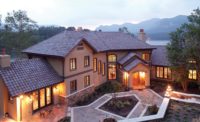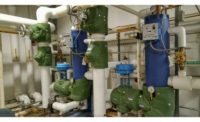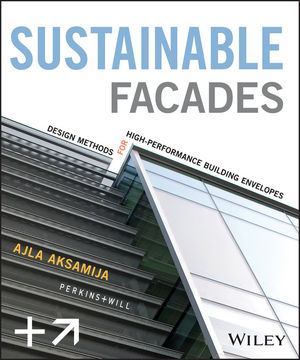Energy performance contracts have become an increasingly vital tool that leverages the long term energy savings generated by the installation of energy-efficient building components to finance large projects that oftentimes would not be possible in the current cash crunch facing many housing authorities.
Honeywell Building Solutions was able to provide $21 million in energy performance contract financing for the retrofit of a multi-story 56-year-old building—thanks in part to the use of 75,000 square-feet of an EIF system. The building and an adjacent twin building comprise the Jackson Towers housing complex.
In providing a portion of the energy savings needed to make the energy performance contract possible, the Dryvit Outsulation Plus MD system proved its worth as a powerful tool in the arsenal of architects, developers and property owners who needed to generate serious energy savings.
For Kurt Oravecz and Dale Hair, principals with the architectural firm KD3 Design Studio in Lemoyne, Pa., Dryvit’s EIFS solution was a natural choice for the Jackson Tower renovation project not only due to its impressive energy savings but also for its placement over the building’s existing brick façade.
“If we had to build out framing in each apartment to make room for the insulation needed to achieve the required energy savings, we would have been giving up precious space in apartments that were small to begin with and really couldn’t afford to lose the space,” says Oravecz.
The Magic of EIFS
Despite the confidence Oravecz and Hair had in the EIFS’ manufacturer’s ability to achieve the desired result, housing authority officials had some lingering concerns about moisture issues the EIFS industry had faced many years earlier with some regional residential installations.
Manning Materials, Dryvit’s exclusive distributor for New Jersey, Delaware, the eastern half of Pennsylvania and two of the five boroughs of New York City, had faced and overcome those concerns before. In this case, Manning Material’s John Roehm, a 23-year employee and veteran of the EIFS industry, was asked by the project architects to meet with their client to address the housing authority’s questions.
“I spent about two and a half hours answering questions and walking the housing authority officials through [the company’s] manufacturing and installation process,” says Roehm, technical sales representative for Manning Materials.
“That’s the day the magic happened,” says Oravecz, in describing Roehm’s presentation. “That meeting truly was the turning point of opening the possibilities of everything that EIFS could bring to the table for the housing authority.”
Dale Hair lauded the transformative impact of the Outsulation Plus MD system in dramatically changing the look of the building. “Dryvit gives us the great advantage of being able to work with different colors and finishes, as well as varying thicknesses of the insulation board to create relief and other great architectural effects,” says Hair. About 35,000 square-feet of the system with 6-inches of continuous insulation (CI) was used along with 40,000 square-feet using 4-inches of CI.
“It’s a nice product and it looks good,” says Robert Grosko, director of Capital Improvements for the Harrisburg Housing Authority. “Once [EIFS] was installed on the exterior of the building, I noticed a real difference in terms of the comfort inside the building. It was very easy to keep the units warm.”
Don’t Need to See It to Believe It
When the renovation is complete in late 2016 and residents re-occupy the building, the energy savings will be measured in part by comparing utility costs to the adjacent Lick Tower building that has not yet been renovated.
Harrisburg Housing Authority’s Grosko doesn’t need to wait for that analysis to see the value of an EIF system. He has already called for its use in a three building, 50-unit new construction housing complex being designed by KD3 Design Studio for the Authority.
KD3 Design Studio has also become a big believer in EIFS, specifying its use in at least half of the firm’s commercial design projects. “We like to use EIF systems for a few reasons,” says Oravecz. “First, it addresses all of the concerns and requirements of an exterior cladding selection which includes the need for a moisture and air barrier, along with insulation and a range of aesthetic finish options. We also like [EIFS] because it offers a single source warranty for the entire cladding system. If there were ever an issue, we would have one place to turn to address any problems. With a cladding choice other than EIFS, you’re often going to be dealing with multiple contractors contributing to the exterior cladding. If something goes wrong, you can find yourself dealing with a lot of finger pointing between contractors. That’s never a good situation for our clients.”
The dramatic change in appearance for Jackson Tower following the installation has already had an unintended benefit before the renovated tower is even opened. The waiting list for apartments in the building continues to grow as nearby residents see firsthand the dramatic transformation taking place at Jackson Tower.











Report Abusive Comment